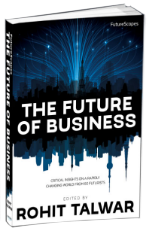27 Apr Tween marketing – it’s not your Mama’s old ads
Do you have a tween at home? A kid grown tired with your pre-packaged, PG rated stuff, yet who’s still too young to be allowed to choose products and entertainment for themselves? Well, guess what – they’re making their own choices and you’re not the only one who are influencing them. It’s not like holding up the blue and the red t-shirt and let the him “choose” what he wants to wear anymore. It  suddenly got a bit more complicated.
suddenly got a bit more complicated.
Other sources are grabbing their attention now and these sources are quickly learning to speak your child’s “language”. And they want your money!
I think it was around the early 2000s that I started to notice how it suddenly became acceptable for marketers to use “target groups” and “tween”, a euphemistic term to describe minors between the ages of 8 and 13, in the same sentence. I say “euphemistic” because I sometimes wonder if “tween” grew into our parlance as a way of muffling the fact that this demographic are actually still kids with chicken legs and buck teeth and all. On the one hand the term “tween” makes for a reasonable distinction because it addresses the age group “in-between”. But it also kind of sounds like “teen”, and I think it might feel a bit more legitimate to organize a marketing campaign around a demographic that rhymes with “teen” rather than, say, “puppy” or “tadpole”. After all marketing to children is still a contentious topic.
There is a consistent trend of more brazen attempts to market directly towards children – eh, tweens. In Growing up with Princess Inc. I mentioned how companies are playing on gender stereotypes to create “repeat customers” in the younger segments. Yet with childish naivety evaporating at ever earlier ages, traditional advertisement and marketing schemes are ironically not that effective anymore. This group is simply too diverse, too media savvy and too interactive to be swayed by one-dimentional advertisement plots where the intentions are anything but subtle.
So when companies started to notice that the customers weren’t as likely to trust traditional cookie cutter messages from the brands themselves anymore, they figured they could receive far more attention and validation if their brands were endorsed by opinion leaders and alpha users first and then let it spread virally via their social networks. Sounds like a lot of social media hype, doesn’t it? It’s just that social media wasn’t really heard of back then (unless you count Friendster maybe). And the internet was mostly a two-dimensional sphere you would go to to get – not spread – information. The time (and place) people spent online were constricted by clunky desktops with slow dial up connections. Yet it was in these pre-social media times that Seth Godin came out with his book The Idea Virus and Malcom Gladwellpublished The Tipping Point, and it was in the early ’00s that the idea of viral marketing really started to take off.
But it’s the caretakers that stand for most of the purchases for this generations, isn’t it? What is the use of trying to capture inattentive youngsters when the parents control the pocket book anyway? It’s is not hard to envision risk averse helicopter parents ensnared by the promises of the endless array of child safety gadgets, health enhancing infant formulas, breast pumps or life insurance policies to protect these pampered kids. Also, tweens are the treasured targets of older gift givers, so a lot of the marketing involved for this age group is directed towards their older relatives. But more importantly, targeting kids directly makes sense because tweens have a particularly high indirect control over the purchasing decision in the form of swaying, begging and even threatening their parents into getting what they want.
With the economic downturn and the impact it has had (have) on household finances, many children are learning to make sacrifices while their parents are struggling to make ends meet. Foregoing needs and wants is how the New Silents/ Homelanders are learning the resilience many of their older Millennial siblings are struggling with in a society that revolves around material consumption. It’s pretty simple, if you grow up knowing money can’t be taken for granted, you learn to adjust.
So I was actually quite surprised learning that the tween market is currently worth $43 billion. Gen-Y expert Jason Dorsey explains this with the relative size of this generation and the release of pent-up demand after the recession.
Because of the slow economy, the national birth rate is going down at the moment, which might affect the the size of the New Silents/ Homelanders as a generation. But the kids that are tweens today were born during a massive baby boom that peaked around 2007. Many of these kids were born at the tail end of the more carefree dot-com days, so they are numerically big and used to being indulged. With the economy starting to show a little bit of improvement, or at least optimism, a dramatic increase in spending is not surprising since people have put off much-needed purchases for a while and are now catching up.
But the most ironic thing is perhaps that the a best-selling tween concept during this economically challenged time seizes young consumers’ current mood of doom and scarcity, namely the wildly popular trilogy and blockbuster The Hunger Games. So the more palpable fear of a post-apocalyptic dystopia where basic necessities are extremely scarce and exploited for bloodthirsty entertainment purposes is fostering real-world spending, which in turn helps pump the economy up. Huh, an interesting turn of events.
Image: David Niblack


FYI if you are a generation X mom with teenage sons
Posted at 01:19h, 03 December[…] feminists will point to a cynical and sexist marketing industry which can target kids younger and younger as the FCC keeps relaxing their regulations on marketing to children. On the other end of the […]